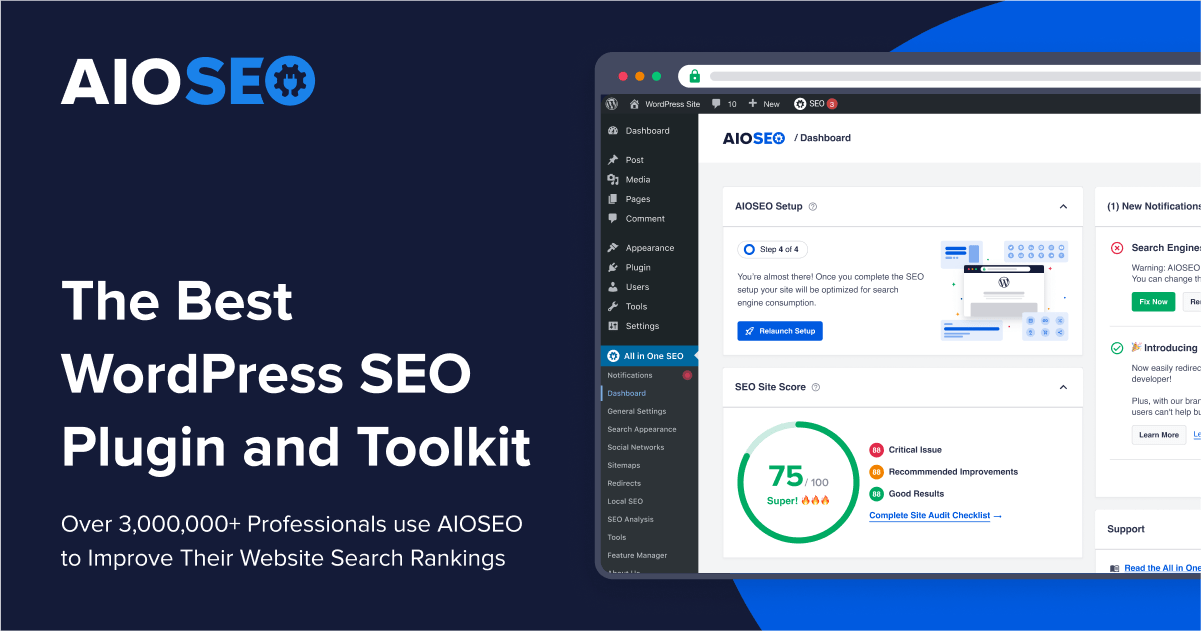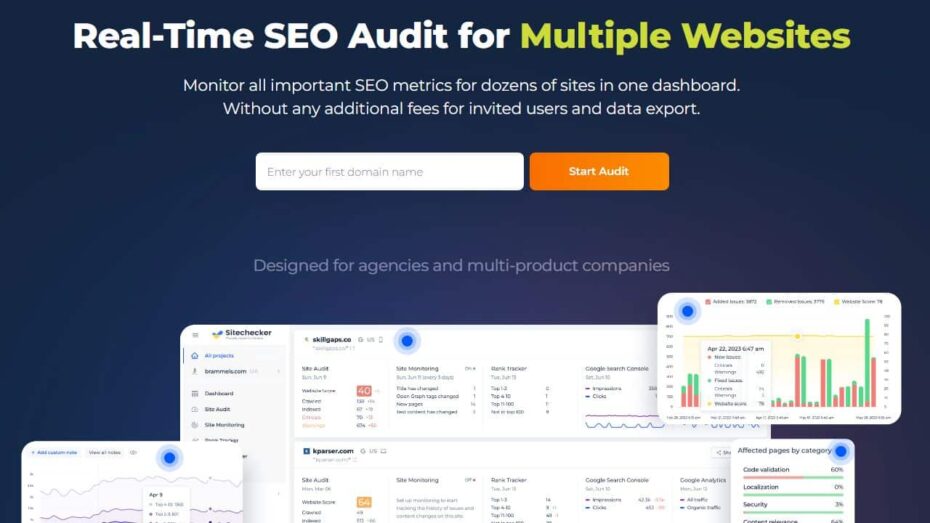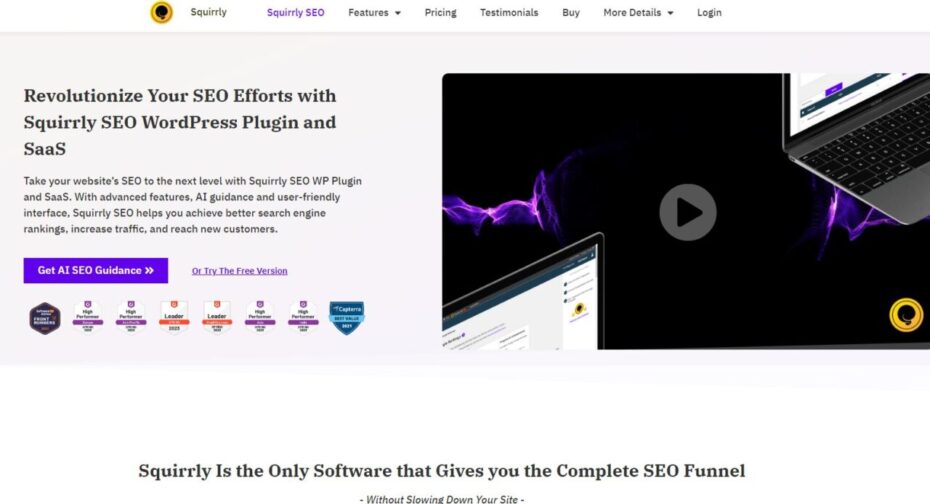Table of Contents
Creating your content is essential for establishing a strong online presence and engaging your audience effectively. Whether you’re a seasoned writer or a beginner, understanding the best steps to start will streamline your process and enhance your results.
1. Define Your Audience and Purpose
Understanding how to create your content effectively begins with defining your audience and purpose. This foundational step ensures that your content resonates with the right people and achieves its intended goals. By identifying your target audience, determining your content goals, and aligning your content with audience needs, you set the stage for success.
Your audience is the backbone of your content strategy. To create your content effectively, start by identifying who your target audience is. This involves understanding their demographics, interests, and pain points. By knowing who you are writing for, you can tailor your content to meet their specific needs and preferences.
Identify Your Target Audience
Identifying your target audience is crucial for creating content that resonates. Begin by researching your audience’s demographics, such as age, gender, location, and occupation. Use tools like Google Analytics, social media insights, and customer surveys to gather this information. Understanding these factors helps you create content that appeals directly to them.
Next, delve into your audience’s interests and behaviors. What topics do they care about? What are their challenges and pain points? Engage with them on social media, read comments on your blog, and participate in forums to gain insights. This will allow you to address their concerns and provide valuable solutions through your content.
Consider creating audience personas. These fictional characters represent segments of your target audience, detailing their characteristics, motivations, and challenges. Personas help you visualize who you are writing for and ensure your content remains focused and relevant.
Tailor your content style and tone to match your audience’s preferences. For instance, if your audience consists of professionals, a formal tone might be appropriate. Conversely, a casual, friendly tone might work better for a younger, more relaxed audience. The key is to create your content in a way that engages and resonates with those you aim to reach.
Determine Your Content Goals
Setting clear content goals is essential for creating purposeful content. Begin by asking yourself what you want to achieve with your content. Common goals include increasing brand awareness, driving website traffic, generating leads, or boosting sales. Defining your goals will guide your content creation process and ensure your efforts are aligned with your business objectives.
Consider using the SMART criteria to set your goals: Specific, Measurable, Achievable, Relevant, and Time-bound. For example, instead of aiming to “increase website traffic,” set a goal to “increase website traffic by 20% within three months.” This provides a clear target and a timeframe for achieving it.
Your content goals should also reflect your audience’s needs and interests. If your goal is to educate, focus on creating informative and helpful content. If your goal is to entertain, develop engaging and enjoyable pieces. Aligning your goals with audience expectations enhances the effectiveness of your content.
Track your progress towards your goals using analytics tools. Monitor metrics such as page views, time on page, conversion rates, and social media engagement. Analyzing these metrics will help you understand what’s working and what needs improvement, allowing you to refine your content strategy accordingly.
Align Content with Audience Needs
Aligning your content with your audience’s needs is key to creating value-driven content. Start by addressing the questions and concerns your audience has. Use tools like AnswerThePublic and Quora to find out what people are asking about in your niche. This helps you create content that provides answers and solutions.
Focus on delivering value in every piece of content you create. Offer actionable tips, insights, and advice that your audience can apply to their own situations. By providing real value, you build trust and credibility with your readers, encouraging them to return for more.
Incorporate feedback from your audience to refine your content. Pay attention to comments, reviews, and social media interactions. Use this feedback to understand what your audience likes and dislikes, and adjust your content accordingly. This continuous improvement process ensures your content remains relevant and valuable.
Keep your content diverse and engaging. Mix different content formats such as blog posts, videos, infographics, and podcasts to cater to various preferences. This not only keeps your audience interested but also helps you reach a broader audience. By aligning your content with your audience’s needs and preferences, you create a more engaging and effective content strategy.
2. Plan and Research Your Content
Planning and researching your content is essential to creating high-quality material that resonates with your audience. When you create your content with a strategic approach, you ensure that it meets your audience’s needs and achieves your objectives. This involves conducting keyword research, outlining your content structure, and gathering reliable sources.
Thorough planning and research save time in the long run and improve the quality and effectiveness of your content. By investing effort in these initial stages, you can produce content that is both engaging and informative.
Conduct Keyword Research
Conducting keyword research is a critical step in creating your content. Start by identifying the primary keyword and related keywords that your audience is searching for. Use tools like Squirrly, Ahrefs, and SEMrush to find relevant keywords with high search volume and low competition.
Next, analyze the search intent behind these keywords. Understanding whether users are looking for information, seeking to make a purchase, or wanting to navigate to a specific site helps tailor your content accordingly. This insight allows you to create content that directly addresses your audience’s needs.
Incorporate both short-tail and long-tail keywords naturally throughout your content. Short-tail keywords are broader and more competitive, while long-tail keywords are more specific and often less competitive. Using a mix of these helps improve your content’s visibility in search engines without resorting to keyword stuffing.
Regularly update your keyword research to keep your content relevant. Search trends can change over time, so staying informed about new keywords and search patterns ensures your content remains up-to-date and effective.
Outline Your Content Structure
Creating a clear content structure is vital for both readers and search engines. Start by drafting an outline that organizes your main points logically. This helps you stay focused and ensures your content flows smoothly.
Begin with a compelling introduction that hooks your readers and clearly states what the content will cover. This is where you should naturally include your primary keyword. Follow the introduction with well-defined sections that delve into your main topics. Each section should have its own subheadings to make the content easier to navigate.
Use bullet points, numbered lists, and short paragraphs to break up the text and enhance readability. This makes your content more digestible for readers and helps search engines understand the structure of your content. Additionally, include relevant images, infographics, and videos to support your points and keep readers engaged.
Conclude with a summary that reinforces your key messages and provides a clear call to action. Whether it’s encouraging readers to leave a comment, share the content, or visit another page on your site, a strong conclusion helps guide your audience’s next steps.
Gather Reliable Sources
Gathering reliable sources is crucial to creating credible and authoritative content. Start by identifying reputable websites, industry publications, and academic journals related to your topic. Using trustworthy sources enhances the quality of your content and builds trust with your audience.
Evaluate the credibility of your sources by checking the author’s credentials, the publication date, and the site’s reputation. Ensure that your sources are up-to-date, especially in fast-evolving fields, to provide the most accurate and relevant information.
Incorporate quotes, data, and statistics from your sources to support your points and add value to your content. This not only strengthens your arguments but also shows that you have thoroughly researched the topic. Be sure to properly cite your sources to avoid plagiarism and give credit to the original authors.
Lastly, diversify your sources to provide a well-rounded perspective. Using a variety of sources prevents bias and ensures that your content covers different viewpoints. This comprehensive approach makes your content more informative and valuable to your readers.
3. Craft Compelling and Valuable Content
To create your content effectively, crafting compelling and valuable material is crucial. This means writing clear and engaging headlines, using power words to enhance readability, and incorporating visuals and examples. These elements help capture your audience’s attention and deliver meaningful information.
Creating valuable content not only engages your audience but also improves your search engine rankings. By focusing on quality and relevance, you can build a loyal readership and establish your authority in your niche.
Write Clear and Engaging Headlines
Headlines are the first impression your content makes on potential readers. To create your content that stands out, start by writing clear and engaging headlines. These headlines should accurately reflect the content while sparking curiosity.
Begin with a specific and informative headline. Instead of a vague title like “Tips for Blogging,” opt for something more detailed, such as “10 Proven Tips for Blogging Success.” This specificity tells readers exactly what to expect and encourages them to click through.
Incorporate numbers and data in your headlines. Readers are drawn to quantifiable information, so headlines like “5 Easy Steps to Improve Your SEO” or “7 Essential Tools for Content Creators” can be highly effective. Numbers create a sense of structure and promise actionable insights.
Use emotional and sensory words to make your headlines more engaging. Words like “ultimate,” “essential,” “amazing,” and “secret” can add an emotional appeal. For example, “The Ultimate Guide to Boosting Your Blog Traffic” is more compelling than a plain headline.
Keep your headlines concise. Aim for 6-12 words that deliver a clear message without being overly complex. This balance ensures that your headlines are easy to read and understand while still packing a punch.
Use Power Words to Enhance Readability
Power words are persuasive and emotionally charged terms that can significantly enhance your content’s readability and impact. When you create your content, strategically incorporating power words can make your writing more engaging and memorable.
Start by identifying the emotions you want to evoke in your readers. Do you want them to feel excited, curious, or inspired? Choose power words that align with these emotions. For example, words like “transform,” “discover,” “unleash,” and “breakthrough” can evoke a sense of excitement and curiosity.
Use power words in your introductions to grab attention. Instead of starting with a bland statement, use a power word to create intrigue. For instance, “Unlock the secrets to successful content creation” is more captivating than “Learn how to create content.”
Integrate power words naturally throughout your content. Avoid overusing them, as this can make your writing seem forced or gimmicky. Instead, sprinkle them in key places such as headings, subheadings, and call-to-action phrases.
Experiment with different power words to see which resonate best with your audience. Over time, you’ll develop a sense of which terms are most effective at engaging your readers and driving desired actions.
Incorporate Visuals and Examples
Visuals and examples are powerful tools for enhancing your content’s appeal and effectiveness. When you create your content, incorporating these elements can help illustrate your points and make your material more engaging.
Start by using relevant images to break up text and add visual interest. High-quality photos, infographics, and charts can help convey complex information more clearly. For instance, if you’re explaining a process, an infographic can provide a step-by-step visual guide.
Videos are another excellent way to enrich your content. Embedding short videos can provide additional value and keep readers on your page longer. For example, a tutorial video related to your topic can offer a practical demonstration that complements your written content.
Examples make your content more relatable and understandable. When explaining a concept, use real-life examples to illustrate your points. For instance, if you’re discussing successful content strategies, cite specific case studies or success stories that highlight your main ideas.
Balance text with visuals to maintain readability. Too many images or videos can overwhelm readers, while too much text can be monotonous. Strive for a harmonious mix that enhances your content without distracting from the main message. This approach ensures that your content remains informative, engaging, and visually appealing.
4. Optimize Your Content for SEO
Optimizing your content for SEO is essential to ensure that it ranks well on search engines and reaches your target audience. To create your content effectively, focus on implementing primary and related keywords, using meta descriptions and alt text, and ensuring mobile-friendliness. These steps will help improve your visibility and drive more organic traffic to your site.
By optimizing your content for SEO, you enhance its discoverability and relevance. This process involves several key strategies that work together to boost your search engine rankings and provide a better user experience.
SEO Services Recommendations
 AIOSEO
|  Sitechecker
|  Squirrly
|
Implement Primary and Related Keywords
Keywords are the foundation of SEO. To create your content that ranks well, start by implementing your primary keyword naturally throughout the text. This includes placing it in the title, headings, and within the first 100 words of your content. Make sure it fits seamlessly into the content without disrupting the flow or readability.
In addition to your primary keyword, use related keywords to diversify your content and capture a broader range of search queries. Tools like SEOpowersuite, Ahrefs, and SEMrush can help identify these related terms. For example, if your primary keyword is “create your content,” related keywords might include “content creation tips,” “writing engaging content,” and “content strategy.”
Strategically placing these keywords in subheadings, image alt text, and throughout the body of your content helps search engines understand the topic and improves your chances of ranking for various search terms. However, avoid keyword stuffing, which can harm readability and lead to search engine penalties.
Regularly update your keyword strategy based on performance metrics. Analyzing which keywords drive traffic and engagement can help refine your content and improve SEO results over time.
Use Meta Descriptions and Alt Text
Meta descriptions and alt text are crucial elements of on-page SEO that can significantly impact your search engine rankings and click-through rates. When you create your content, crafting compelling meta descriptions and using descriptive alt text for images can enhance your visibility and user experience.
Meta descriptions are brief summaries of your content that appear in search engine results. They should be concise, typically between 150-160 characters, and include your primary keyword. A well-crafted meta description entices users to click on your link by clearly conveying the value and relevance of your content. For instance, a meta description for this content might be, “Learn how to optimize your content for SEO with tips on keyword implementation, meta descriptions, and mobile-friendliness.”
Alt text, or alternative text, is used to describe images on your website. This text helps search engines understand the content of your images, which can improve your site’s overall SEO. It also enhances accessibility for visually impaired users. Ensure your alt text is descriptive and includes relevant keywords where appropriate. For example, an image of a content creation process could have alt text like, “Step-by-step guide to creating engaging content.”
Both meta descriptions and alt text should be crafted with the user in mind, providing clear and relevant information that enhances their experience and encourages engagement with your content.
Ensure Mobile-Friendliness
With an increasing number of users accessing content on mobile devices, ensuring your content is mobile-friendly is crucial for SEO and user experience. When you create your content, optimizing it for mobile devices involves several key practices.
First, use a responsive design that automatically adjusts your website’s layout to fit different screen sizes. This ensures your content is easily readable and navigable on smartphones, tablets, and desktops. Responsive design improves user experience and is favored by search engines like Google.
Next, optimize your images and media for faster loading times. Large, unoptimized images can slow down your site, leading to higher bounce rates and lower search engine rankings. Compress images without sacrificing quality and use modern formats like WebP for better performance.
Simplify navigation for mobile users by using clear menus and easily clickable buttons. Avoid cluttered layouts and ensure that important elements, such as call-to-action buttons, are prominently displayed and easy to interact with.
Test your content on various mobile devices to ensure it performs well across different platforms. Tools like Google Mobile-Friendly Test can help identify any issues and provide recommendations for improvement. By ensuring your content is mobile-friendly, you enhance accessibility and improve your chances of ranking higher in mobile search results.
5. Review, Edit, and Publish Your Content
Reviewing, editing, and publishing your content is the final step in the content creation process. To create your content that truly stands out, focus on proofreading for grammar and clarity, getting feedback and making adjustments, and scheduling and publishing consistently. These steps ensure your content is polished, professional, and ready to engage your audience.
Taking the time to review and edit your content thoroughly can significantly enhance its quality and impact. By following these best practices, you can publish content that resonates with your readers and achieves your objectives.
Proofread for Grammar and Clarity
Proofreading is essential for creating high-quality content. Begin by reading your content carefully to catch any grammatical errors, typos, or awkward phrasing. Tools like Grammarly and Hemingway can assist in identifying common mistakes and improving readability.
Focus on clarity and conciseness. Ensure that your sentences are easy to understand and that your ideas are presented logically. Avoid jargon and overly complex language that might confuse your readers. Instead, aim for a conversational tone that makes your content accessible and engaging.
Reading your content aloud can help you spot errors and awkward phrasing that you might miss when reading silently. This technique also allows you to hear the flow of your content and make adjustments to improve its rhythm and readability.
Finally, consider having a colleague or friend review your content. A fresh set of eyes can provide valuable feedback and catch errors you might have overlooked. Their input can help refine your content and ensure it meets high standards of quality and professionalism.
Get Feedback and Make Adjustments
Seeking feedback is a crucial step in the content creation process. Share your draft with colleagues, industry peers, or members of your target audience to gather constructive criticism and suggestions for improvement.
Pay attention to common themes in the feedback you receive. If multiple reviewers point out the same issues or suggest similar changes, these are likely areas that need attention. Use this feedback to make informed adjustments that enhance the overall quality and effectiveness of your content.
Be open to criticism and willing to make changes. While it can be challenging to hear negative feedback, it is an invaluable tool for improving your content. Approach feedback with a positive mindset and view it as an opportunity to learn and grow as a content creator.
Incorporate the feedback into your content and review it again to ensure the changes have been implemented effectively. This iterative process of gathering feedback and making adjustments helps you create polished, high-quality content that meets the needs of your audience.
Schedule and Publish Consistently
Consistency is key to building a loyal audience and maintaining high engagement levels. Create a content calendar to plan and schedule your content in advance. This helps you stay organized and ensures a steady flow of fresh material for your readers.
When scheduling your content, consider your audience’s preferences and habits. Determine the best times and days to publish based on when your audience is most active and likely to engage with your content. Tools like Google Analytics and social media insights can provide valuable data to inform your scheduling decisions.
Stick to your publishing schedule to build trust and reliability with your audience. Consistent publishing signals to your readers that they can expect regular updates, which can encourage repeat visits and long-term engagement.
Monitor the performance of your published content and adjust your strategy as needed. Analyze metrics such as page views, engagement rates, and social shares to understand what resonates with your audience. Use these insights to refine your content calendar and improve your future content planning.
Promote and Analyze Your Content
Promoting and analyzing your content is crucial for reaching a wider audience and understanding the impact of your efforts. When you create your content, it’s essential to share it on social media platforms, engage with your audience, and track performance metrics. These steps will help you maximize visibility and continuously improve your content strategy.
By promoting your content effectively and analyzing its performance, you can identify what works best for your audience and refine your approach to achieve better results.
Share on Social Media Platforms
Sharing your content on social media platforms is a powerful way to reach a broader audience and drive traffic to your website. Start by identifying the platforms where your target audience is most active. Popular options include Facebook, Twitter, LinkedIn, Instagram, and Pinterest. Tailor your content to fit the unique characteristics and user expectations of each platform.
Craft engaging and shareable posts that highlight the key points of your content. Use eye-catching headlines, compelling images, and relevant hashtags to attract attention. For example, if you create your content about digital marketing tips, share snippets or quotes from your article along with a link to the full post.
Utilize scheduling tools like Buffer or Hootsuite to plan and automate your social media posts. This ensures a consistent posting schedule and helps maintain a steady flow of content. Additionally, engage with your audience by responding to comments, participating in discussions, and sharing user-generated content. This interaction builds a sense of community and encourages more shares and interactions.
Collaborate with influencers and industry experts to amplify your reach. Influencers can help introduce your content to a larger audience and lend credibility to your message. Reach out to them with personalized pitches and offer mutual benefits, such as guest posting opportunities or social media shoutouts.
Engage with Your Audience
Engaging with your audience is essential for building strong relationships and fostering a loyal community. Start by actively participating in conversations on social media, blog comments, and forums related to your niche. Respond promptly and thoughtfully to comments and questions, showing that you value your audience’s input.
Create content that encourages interaction and engagement. Ask open-ended questions, conduct polls, and invite your audience to share their opinions and experiences. For example, if you create your content about travel tips, ask your audience to share their favorite travel destinations or experiences.
Host live sessions, webinars, or Q&A sessions to connect with your audience in real-time. These interactive events allow you to address questions directly, provide valuable insights, and build a more personal connection with your followers. Promote these events in advance to maximize participation and engagement.
Recognize and reward your most engaged audience members. Highlight user-generated content, offer shoutouts, or run contests and giveaways. This acknowledgment encourages continued interaction and helps build a loyal community that actively engages with your content.
Track Performance Metrics
Tracking performance metrics is crucial for understanding the effectiveness of your content and making data-driven decisions. Use analytics tools like Kissmetrics, social media insights, and content management system (CMS) analytics to monitor key metrics. These metrics include page views, bounce rates, time on page, social shares, and conversion rates.
Analyze which content performs best and why. Identify patterns and trends, such as the types of content that receive the most engagement or the best times to post. For instance, if you notice that your audience prefers video content, consider incorporating more videos into your content strategy.
Set specific goals and key performance indicators (KPIs) to measure success. For example, if your goal is to increase website traffic, track metrics like unique visitors and referral sources. If your goal is to boost engagement, focus on metrics like comments, shares, and likes. Regularly reviewing these metrics helps you understand whether you are meeting your objectives and where you need to adjust your strategy.
Use the insights gained from tracking metrics to refine your content and promotion strategies. Experiment with different content formats, topics, and promotional tactics to see what resonates best with your audience. Continuously optimizing your approach based on performance data will help you create more effective content and achieve better results over time.






